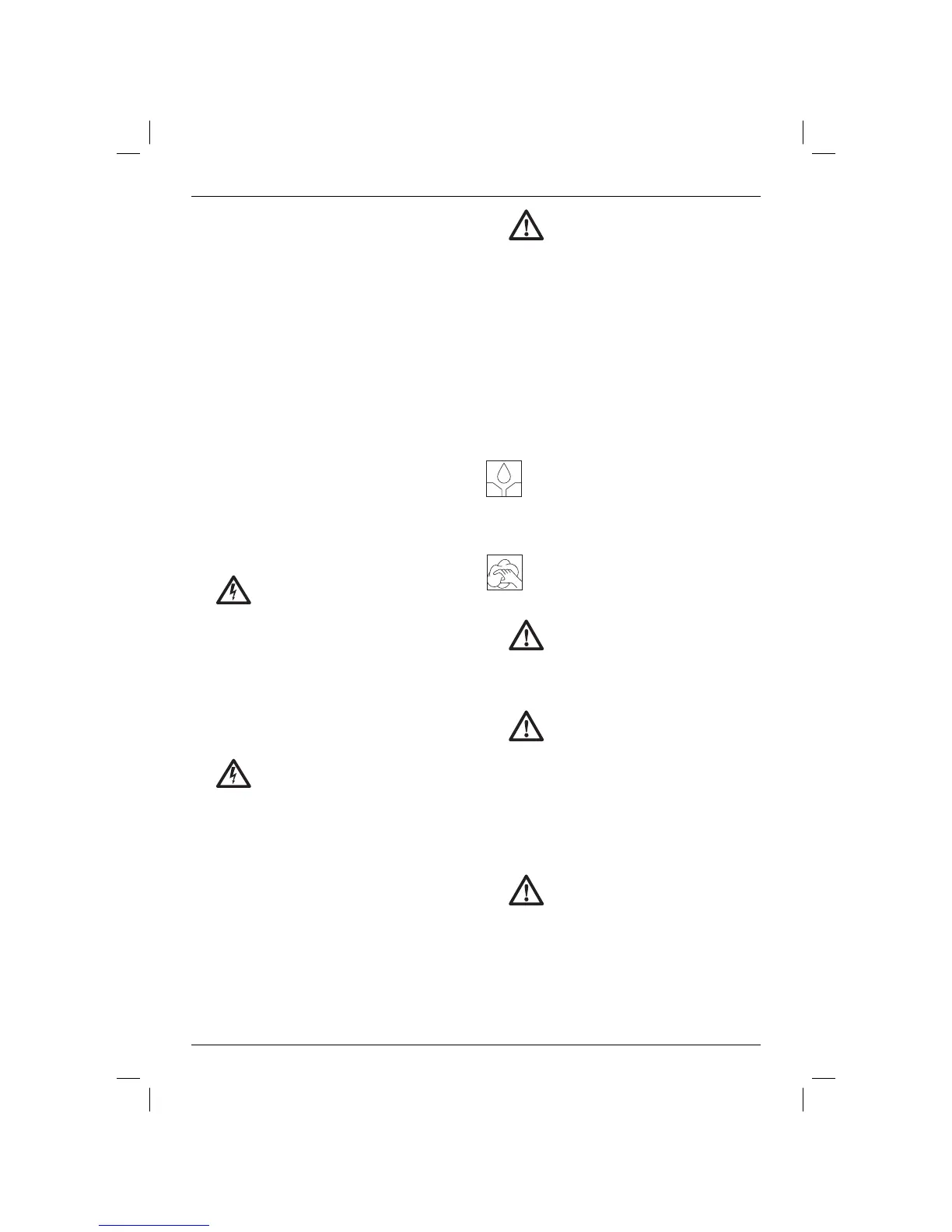ENGLISH
9
reconnecting the tool, depress and
release the trigger switch to ensure that
the tool is off.
Attaching Side Handle (fi g. 1)
WARNING: Before using the tool, check
that the handle is tightenedsecurely.
Screw the side handle(c) tightly into one of the holes
on either side of the gear case. The side handle
should always be used to maintain control of the
tool at alltimes.
Accessories and Attachments
It is important to choose the correct guards, backing
pads and flanges to use with grinder accessories.
Refer to chart at the end of this section for
information on choosing the correctaccessories.
NOTE: Edge grinding can be performed with
Type27 wheels designed and specified for
thispurpose.
WARNING: Accessories must be rated
for at least the speed recom mended
on the tool warning label. Wheels and
other accessories running over rated
accessory speed may burst and cause
injury. Threaded accessories must
have a M14 hub. Every unthreaded
accessory must have a 22 mm arbor
hole. If it does not, it may have been
designed for a circular saw and should
not be used. Use only the accessories
shown in the chart at the end of this
section. Accessory ratings must be
above listed minimum wheel speed as
shown on toolnameplate.
Mounting Guards
WARNING: To reduce the risk
of serious personal injury, turn
tool off and disconnect tool from
power source before making any
adjustments or removing/installing
attachments or accessories. Before
reconnecting the tool, depress and
release the trigger switch to ensure that
the tool is off.
CAUTION: Guards must be used with
this grinder.
When using the DWE4205, DWE4212 or the
DWE4215 grinder for cutting metal or masonry, a
Type 1 guard MUST be used. Type1 guards are
available at extra cost from DEWALTdistributors.
NOTE: Please refer to the Grinding and Cutting
Accessory Chart at the end of this section to
see other accessories that can be used with
thesegrinders.
MOUNTING AND REMOVING THE GUARD (FIG. 2)
To Mount the Guard
1. Place the angle grinder on a table, spindle up.
2. Press the guard (f) down (fig. 2A).
3. Position the guard between your body and work
piece.
4. Tight the screw (k) holding the cinch collar
firmly around the neck of spindle (fig. 2B)
To Remove the Guard
1. Loosen the screw (k) holding the cinch collar
around the neck of the spindle.
2. Lift up on the guard.
Fitting and Removing a Grinding or
Cutting Disc (fi g. 1, 3, 4)
WARNING: Do not use a
damageddisc.
1. Place the tool on a table, guardup.
2. Fit the backing flange(d) correctly onto the
spindle(b) (fig. 3).
3. Place the disc(o) on the backing flange(d).
When fitting a disc with a raised centre, make
sure that the raised centre(n) is facing the
backing flange(d) (fig. 4).
4. Screw the threaded locking flange(e) onto the
spindle(b) (fig. 4):
a. The ring on the threaded locking flange(e)
must face towards the disc when fitting a
grinding disc (fig. 4A);
b. The ring on the threaded locking flange(e)
must face away from the disc when fitting a
cutting disc (fig. 4B).
5. Press the spindle lock button(a) and rotate the
spindle(b) until it locks inposition.
6. Tighten the threaded locking flange(e) with the
hex key provided (m) or a two pinspanner.
7. Release the spindlelock (a).
8. To remove the disc, loosen the threaded locking
flange(e) with the hex key provided (m) or a two
pinspanner.
NOTE: Edge grinding can be performed with
Type27 wheels designed and specified for this
purpose; 6 mm thick wheels are designed for

